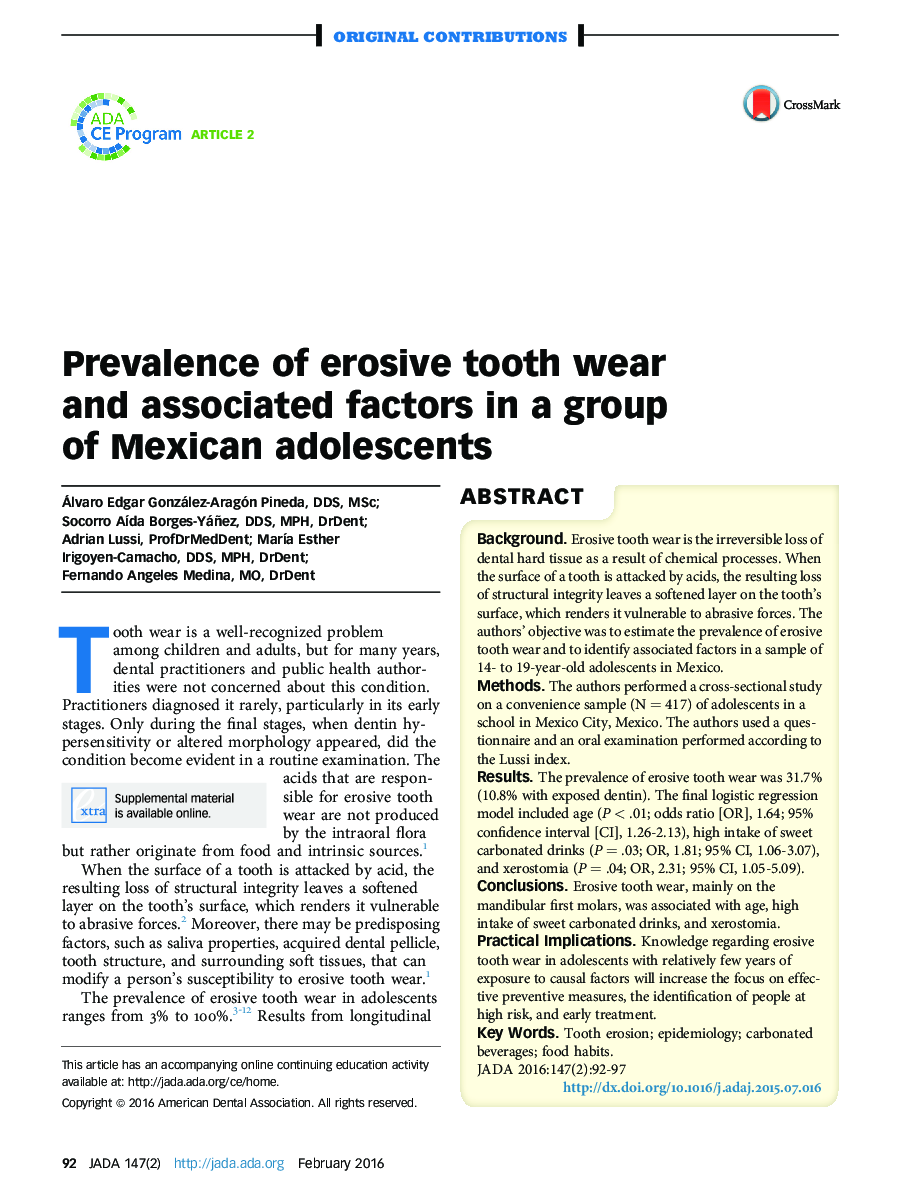| Article ID | Journal | Published Year | Pages | File Type |
|---|---|---|---|---|
| 3136460 | The Journal of the American Dental Association | 2016 | 6 Pages |
BackgroundErosive tooth wear is the irreversible loss of dental hard tissue as a result of chemical processes. When the surface of a tooth is attacked by acids, the resulting loss of structural integrity leaves a softened layer on the tooth’s surface, which renders it vulnerable to abrasive forces. The authors’ objective was to estimate the prevalence of erosive tooth wear and to identify associated factors in a sample of 14- to 19-year-old adolescents in Mexico.MethodsThe authors performed a cross-sectional study on a convenience sample (N = 417) of adolescents in a school in Mexico City, Mexico. The authors used a questionnaire and an oral examination performed according to the Lussi index.ResultsThe prevalence of erosive tooth wear was 31.7% (10.8% with exposed dentin). The final logistic regression model included age (P < .01; odds ratio [OR], 1.64; 95% confidence interval [CI], 1.26-2.13), high intake of sweet carbonated drinks (P = .03; OR, 1.81; 95% CI, 1.06-3.07), and xerostomia (P = .04; OR, 2.31; 95% CI, 1.05-5.09).ConclusionsErosive tooth wear, mainly on the mandibular first molars, was associated with age, high intake of sweet carbonated drinks, and xerostomia.Practical ImplicationsKnowledge regarding erosive tooth wear in adolescents with relatively few years of exposure to causal factors will increase the focus on effective preventive measures, the identification of people at high risk, and early treatment.
